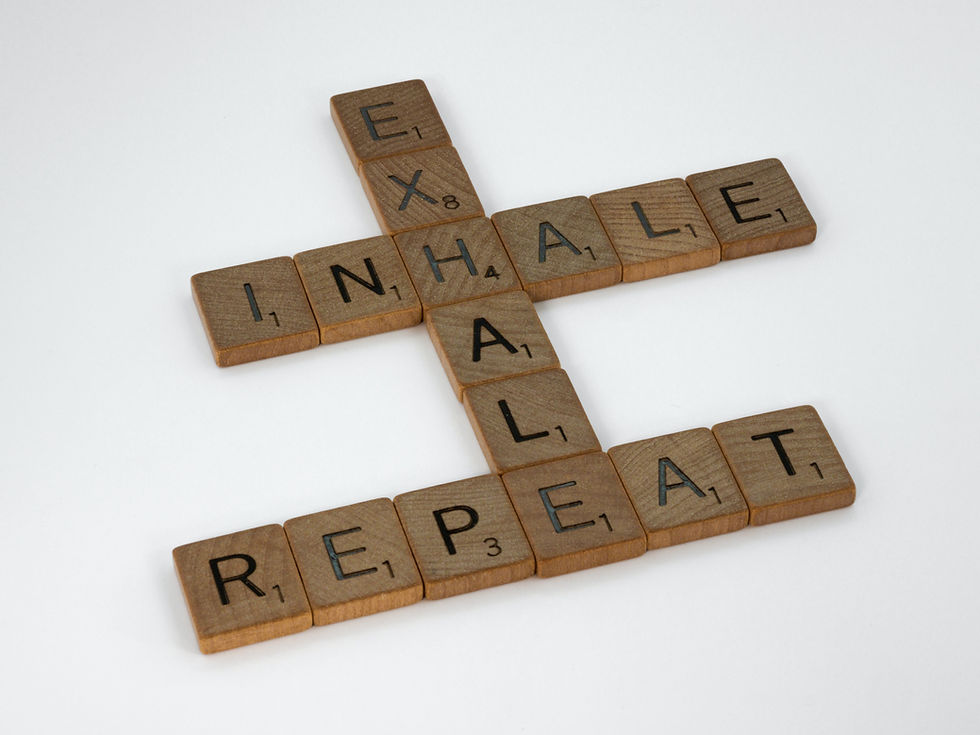Taking a Holistic Approach to Balance Your Hormones
- Marissa Sylvester
- Nov 17, 2021
- 3 min read
Healthy food is medicine, therefore, the types of foods we choose to eat have a profound impact on balancing our hormones too.
That’s why we need to start at the beginning: what exactly should we be putting in our mouths, and why?
Let’s go through the top vegetables you need in your meals, how your gut health makes a huge impact on your hormones, and how to add proper amounts of differing proteins for healthy cell repair and reproduction.
FOODS FOR THOUGHT:
Broccoli sprouts, part of the cruciferous vegetable family, are great for balancing estrogen levels. Other cruciferous vegetables like Brussel sprouts, cauliflower, kale, and bok choy also help with estrogen production.
But carrots, in particular, I like to use for preventing estrogen dominance due to their fiber content. Fiber, as well as lignans, which are abundant in flaxseed, Psyllium husk, sunflower seeds, and sesame seeds, facilitate the binding and removal of unbound active estrogens from the system and also contain anti-inflammatory Omega 3 fatty acids.
Sweet potatoes assist our cells in delivering optimal progesterone levels, are high in beta carotene/Vitamin A, potassium, and vitamin C, and contain compounds that target inflammation at a cellular level.
Purple sweet potatoes are packed with phytonutrients which have the ability to reduce inflammation in both nerve and brain tissue according to a study done by Neurochemistry International in 2010. They also assist with Heavy metal removal as they contain compounds that can bind to heavy metals such as lead, mercury, copper, & cadmium when passing through the gut.
Avocados are loaded with beta-sitosterol, which can positively affect blood cholesterol levels and help balance cortisol. Also, the plant sterols in avocados influence estrogen and progesterone- the two hormones responsible for regulating ovulation and menstrual cycles.
MEAL PLANNING TIP:
When eating whole foods, think of fruits, vegetables, and healthy whole grains. For most meals, focus on making half your plate non-starchy vegetables and a fourth of your plate starchy vegetables like potatoes or whole grains.
YOUR GUT MATTERS:
One of the most important findings in science is the role your gut plays in the creation, regulation, and carrying of hormones to various parts of your body.
Our gut produces 60-90% of the neurotransmitters needed for our continued cognitive focus, mental wellness, and brain health as we age. WOW!
So why is this important? Because the microbes in our gut can heighten fear and sadness, and alert us when we feel anxious (butterflies in the stomach). The gut also releases enzymes that help us digest, metabolize and assimilate the food we eat, AND they even determine overall immune system function.
So what can you do to help? Eat prebiotic foods like raw garlic, oats, asparagus, dandelion, almonds, apples, bananas, Jerusalem artichokes, and chicory, as these are the prebiotic foods that feed our gut bacteria which are paramount in the regulation of our hormones.
THE IMPORTANCE OF PROTEIN:
Proteins quite literally make up for every single cell in your body. Without protein, our cells cannot repair, replicate and make healthy cells.
NOTE: Too much of a good thing is just as bad as not enough. ;)
Do you eat large portions of meat at each meal and have challenges with cholesterol?
It could be due to the excesses of proteins in the diet.
My rule of thumb is 1 main protein source per meal and then add nuts and seeds and protein-rich plants to increase the bioavailability of protein to the cells.
Aim for a palm-sized portion (or 3-5 ounces) of protein every meal. Or, for men, aim for 2 palm-sized portions.
Here are some examples of what 30 grams of protein can look like:

BACK TO THE BEGINNING:
Now that you know all about the best veggies, gut health for hormones, and the different proteins for healthy cell repair and reproduction- what changes are you going to implement in your next meals?
Play around with it, start with what you enjoy the most, and go from there. Small changes make a huge difference as you go too. If you have any questions, I’m here to help! Just send me a message HERE.
If you enjoyed this blog and want to learn more about women’s health from a Holistic Nutritionist, then join the waitlist for my new Women's Wellness Society Membership that’s starting soon! Click here. You can get a sneak peek at the membership in the video below.




Comments